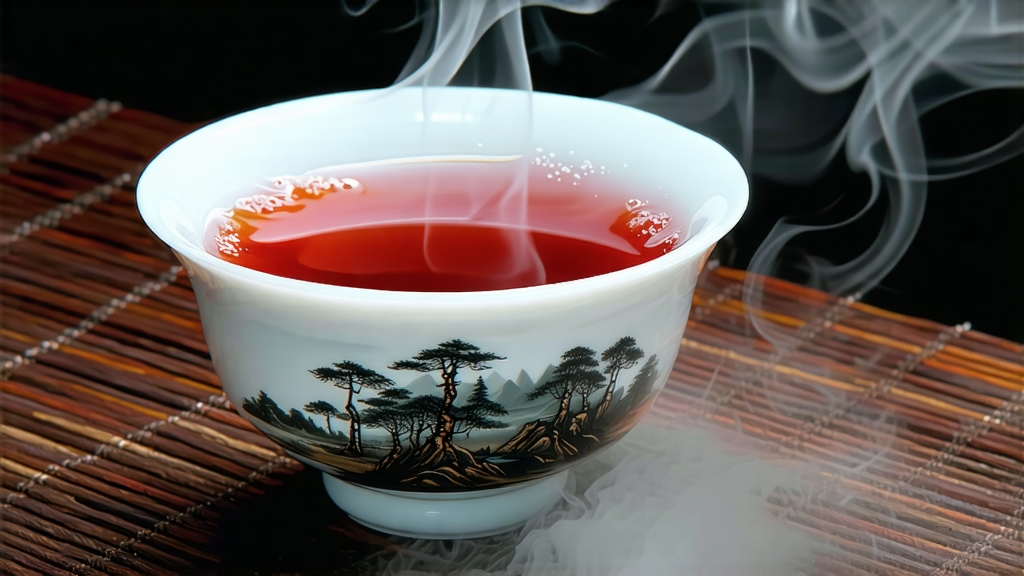
Long before English tea clippers raced across the oceans and Victorian parlors rang with the clink of bone-china, a small village in the Wuyi Mountains of northern Fujian was already perfuming its tea with pine fire. That village—Tongmu—gave the world Lapsang Souchong, the earliest black tea ever recorded and the prototype for every keemun, assam, and ceylon that followed. To understand Lapsang Souchong is to hold the keystone of global black-tea history: it is at once a Chinese heirloom, a Dutch mercantile curiosity, a Russian caravan staple, and a modern sommelier’s secret weapon.
History: From Ming-Era Mist to London Drawing Rooms
Local lore fixes the birth year around 1568, late Ming dynasty, when a passing army forced farmers to abandon freshly picked leaves. By the time the soldiers marched on, the green leaf had oxidized. Rather than discard it, the pragmatic villagers dried the darkened tea over available pine embers to hasten finishing. The result—brisk, coppery, and laced with campfire sweetness—found favor with the neighboring Yixing potters, who ferried it down the Min River to the port of Xiamen, then labeled “Amoy” on European maps. By 1604 Dutch East India merchants had loaded the first chests bound for Amsterdam; the English coined the name “bohea” (from the local “Wuyi”) and elevated it to such status that the 1662 dowry of Catherine of Braganza included a chest of Lapsang among the Portuguese princess’s wedding gifts. The tea tax on “souchong” grades would later help spark a certain Boston party in 1773, sealing Lapsang’s role in world affairs far beyond its humble mountain cradle.
Terroir: Why Only Tongmu Can Birth Original Souchong
The Wuyi range is a UNESCO dual heritage site where 600-million-year-old granite cliffs trap clouds the way a snifter captures aroma. At 27° north latitude, day-night temperature swings of 15 °C slow leaf growth, concentrating amino acids. The mineral-rich, sandy loam is so porous that rainwater drains within minutes, forcing roots to dive three meters in search of aquifers, picking up flint and quartz notes that translate into a subtle stony finish in the cup. Above 1,200 m, the indigenous small-leaf cultivar—culturally called “cai cha” (vegetable tea)—develops a rose-like precursor called geraniol that ordinary Camellia sinensis var. sinensis lacks. Move the same cultivar even ten kilometers outside the protected Tongmu core zone and the signature pine-smoke affinity disappears; hence the European Commission grants Tongmu Lapsang Souchong Protected Designation of Origin status, mirroring Champagne in France.
Two Faces of Smoke: Traditional Zhengshan vs. Modern Wuyi Style
Purists divide Lapsang into two genealogies. Zhengshan (“original mountain”) is produced inside the 680-hectare Tongmu enclave and still withered over masson pine fires built on local quartzite slabs. The smoke must be cool (28–32 °C) and indirect, curling upward through bamboo trays for 8–10 hours, allowing phenols to bond with leaf sugars without scorching. Only the top two leaves and a bud are picked in the brief May window before the Dragon Boat Festival; 4 kg of fresh leaf yield 1 kg of finished tea.
Outside Tongmu, Wuyi-style Lapsang borrows the same withering logic but often uses electric heat for the kill-green stage, adding a final cold-smoke phase with pine needles rather than logs. The result is cleaner on the palate, lighter on creosote, and travels better in sealed foil bags—hence the grade known as “FTGFOP” (Finest Tippy Golden Flowery Orange Pekoe) found in English breakfast blends.
Craft: Eight Steps from Leaf to Curl
- Plucking: 5–6 a.m. mist ensures turgid leaf; anything after 9 a.m. carries less geraniol.
- Solar Withering: Leaves are laid on bamboo screens for 30 minutes of soft morning sun to reduce moisture to 65 %.
- Indoor Withering: Moved into the loft of a three-hundred-year-old cedar chalet where pine smoke, channeled through underground flues, wafts for 6 hours; oxidation begins